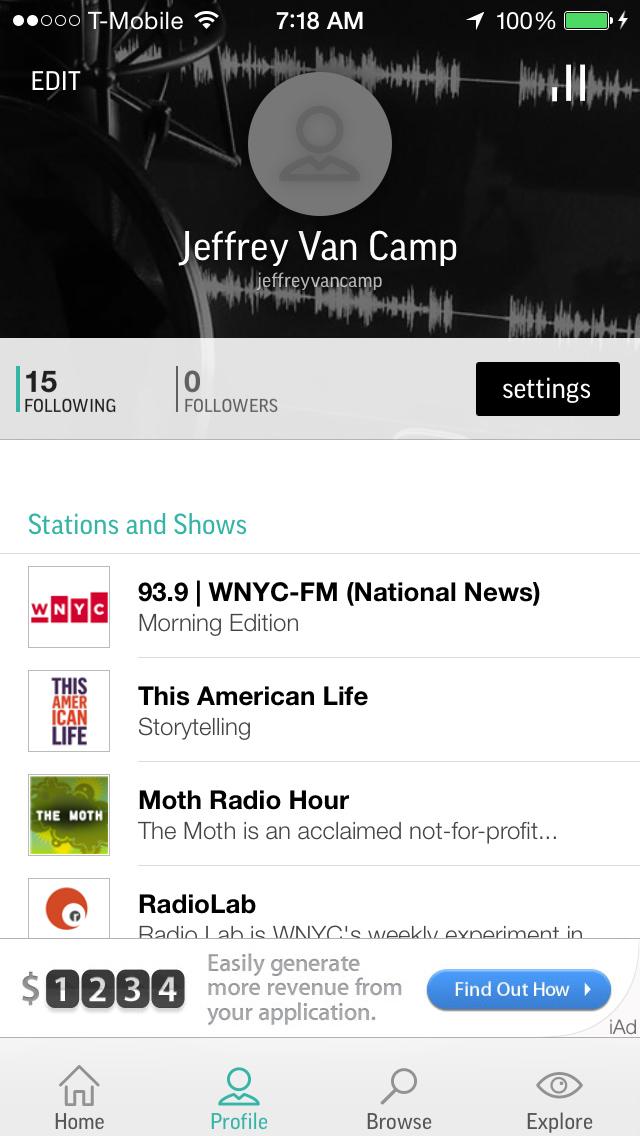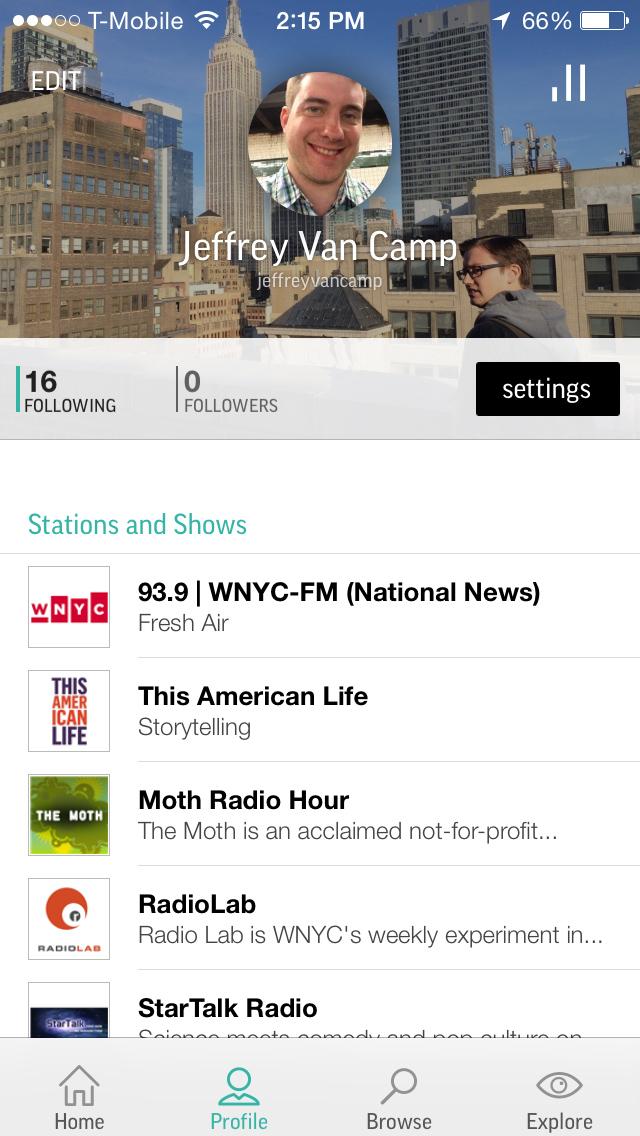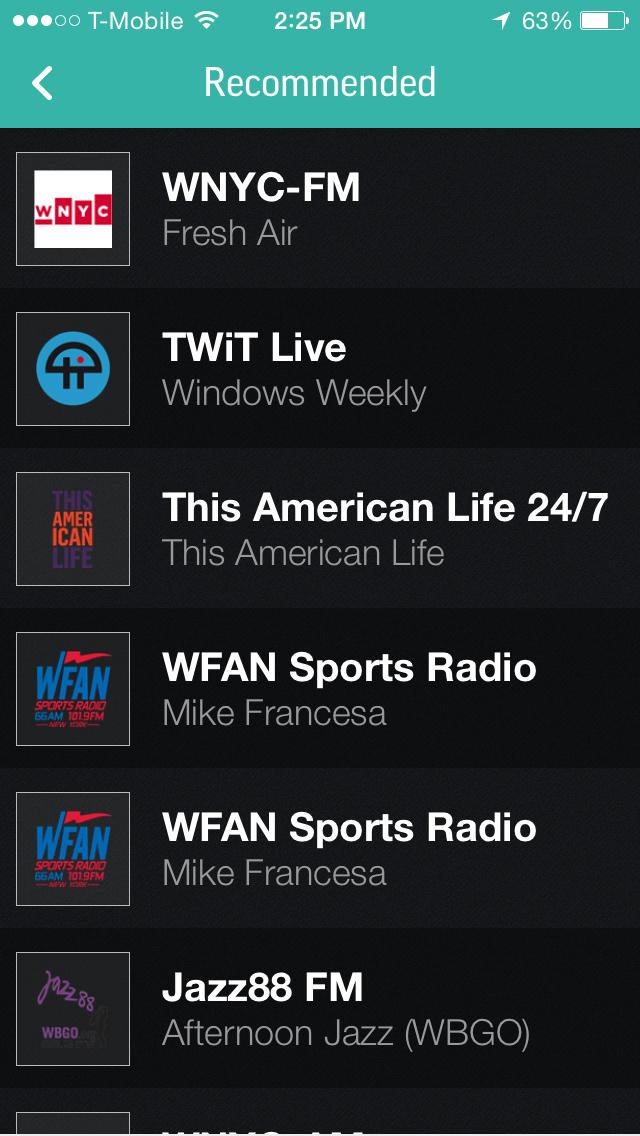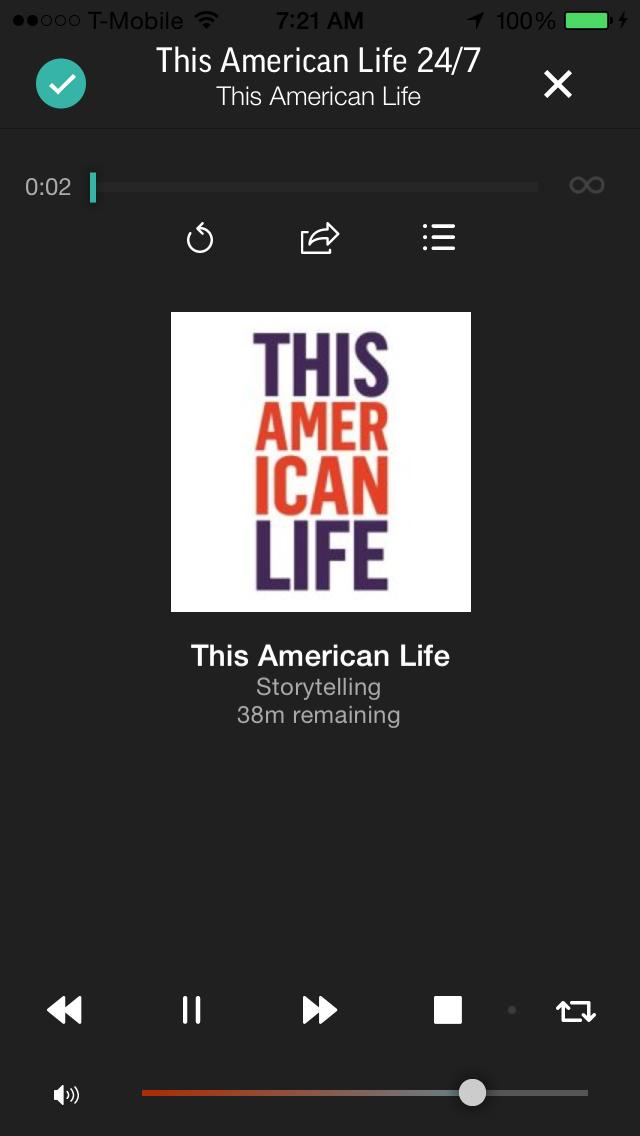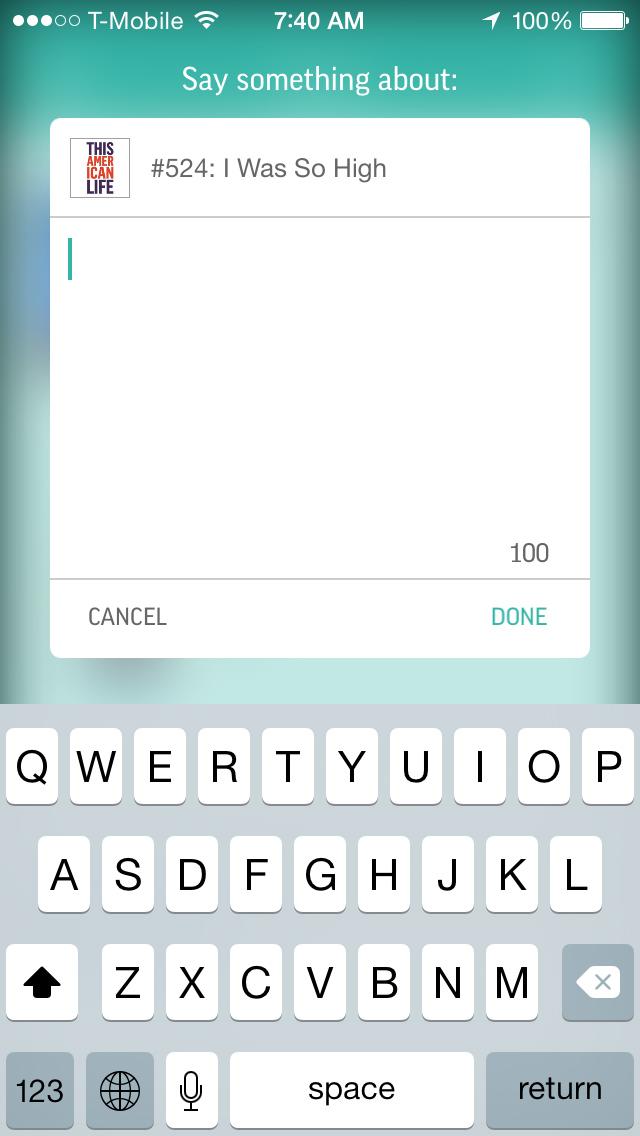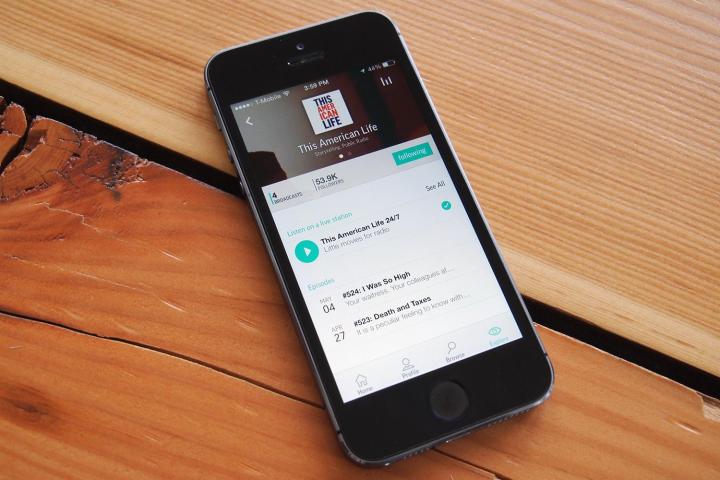
If you don’t use TuneIn, you may want to adjust your dial.
For years, TuneIn has been a great app for listening to live radio broadcasts on your phone. With this simple model, it has amassed 50 million active users each month. Now, it’s becoming a whole lot more. In an update today, TuneIn has gone from being a directory of radio stations to a full-fledged social network built around live and on-demand radio.
“The way TuneIn worked before, is that you’d browse around, find a station, and you would favorite it, or bookmark it,” TuneIn CEO John Donham told Digital Trends. “What we’re doing next is looking more like an audio Twitter or audio Facebook. Instead of being a browser with bookmarks, you’re going to have a whole bunch of brands that you’re going to find and follow.”
The new design feels like Spotify for radio fans.
TuneIn’s VP of Product, Kristin George, gave us a full run through of the new app and we’ve been testing the beta version ourselves for several days. (You can download the new version now on Android and iOS.) The new TuneIn doesn’t yet fulfill its promise, but it’s well on its way. If a few features are added, it could really become the one-stop shop for all things audio. As big radio listeners, we couldn’t be more excited.
Meet ‘Explore,’ the new way TuneIn plugs you in
If you’re an avid NPR listener or have podcasts you love, then joining a service like TuneIn isn’t a big deal — you just search for what you like. But most people aren’t like this. This is why TuneIn’s team decided that its simple list of categories and Google-like search feature needed some modernizing.

“In the past, we really looked a lot like Yahoo plus Google, and we felt like we really needed to take it to the next level,” said Kristin George. “It’s just so hard to discover 100,000 stations in this directory format.”
Donham chimed in, comparing a new TuneIn user to someone who just discovered the Internet: “It would be like if you’ve never been on the Internet before and the very first page you see is Google. And [you’re] like ‘well, I don’t know what I’m looking for. What’s the Internet?'”
This is why TuneIn now has a smart profile-creation process. As soon as you begin, you fill out the typical registration stuff, then land right on the Explore page. It presents you with a bunch of suggestions for things you might like, including music genres, news, comedy, sports shows, storytelling programs, and tons of other choices including our personal favorite: tech. Suggestions that popped up for us included some of our favorites like Planet Money, RadioLab, WTF with Marc Maron, and TWiT Live. Clicking on a show means you now “Follow” that show, which is a lot like subscribing to it on a podcasting app like iTunes. You can also follow entire radio stations or topics, like “March Madness” or “Michigan State Spartans,” in our case (Go green!).
We’re currently following 16 different stations and shows, which you can see in our profile page. You’ll also notice that people can now Follow us as well. The whole design and feel heavily mimics Spotify, though with a decidedly aqua color tone.
A Twitter feed of audio
Once we set up our profile, the next big thing we noticed was the Home page, which is now a feed that looks like a mixture between Twitter and a directory of past episodes. This feed shows you, as a timeline, all the most recent content from the stations, shows, and topics you Follow. At the top are the music genres or artists you like, and below that are Live stations, and then recent podcast episodes of your favorite shows.
After listening to a great episode of This American Life, I “Echoed” the show, letting Ira Glass know how much I liked it.
If you follow a particular topic, like “college football” or some other series, TuneIn will keep your feed active with the latest radio commentaries of games you care about.
“So I’m following the NHL, and they have all these different events on different stations. So Redwings, Bruins, [or any other team’s games] will appear in my feed when its on,” explained George as she demonstrated the feature to us.
We really wish we had this feature during March Madness.
… and you can tweet (“Echo”) back
Having a Twitter-like feed of new content and updates is great, but interacting with it is better. Every update now has an “Echo” button next to it.
You can send 100 character responses, called “Echoes,” to any item on your feed. After listening to a great episode of This American Life, I Echoed the show, letting host Ira Glass know how much I liked it. You don’t have to write anything either. Echoing a blank comment is the same as Liking something on Facebook or upvoting a post on Reddit. You’re letting TuneIn know that you like this.

An Echo can be public or private, depending on your overall settings, and can really help particular episodes or updates from stations stand out. Anyone following me, for example, might see that I Echoed This American Life on their feed. Much like Facebook, the more people who Echo an update, the more TuneIn knows that it should recommend that content to others. It won’t always have to be episodes either. Ira Glass could put out a text-only update as well, notifying fans of something cool This American Life is up to (or, more likely, asking for donations to help pay for bandwidth).
This type of direct interaction was almost impossible before. Stations could ask that listeners go to a website or call in, but there was never a direct connection. In fact, most podcasts don’t really even know how many true fans they have. TuneIn provides content creators with exact numbers of people that Follow and actually listen to their live and recorded programs.
“TuneIn has 50 million monthly active users from around the world listening to 100,000 different radio stations, and 4 million different podcasts,” Donham told Digital Trends.
By simply turning the feed, Follow, and Echo features on, TuneIn has become the largest radio social network in the world.
The big missing features: downloading and offline modes
TuneIn may have transformed from a radio aggregator into a full-fledged podcast player and social network overnight, but it has a ways to go before it lives up to its vision.
Currently, the app cannot download or store episodes for you, a staple of any podcasting app, and a necessity for anyone who doesn’t want to eat up gigabytes of expensive cellular bandwidth each month by only listening live. When we asked about this, George and Donham acknowledged it’s a common request, but explained the rationale behind omitting it.
If TuneIn users and radio fans are as excited as we are about the app’s new direction, it could really take off.
“We actually think its smarter to not download, though we’re considering adding it,” said George. “New York is a little special because you want to download for when you’re on the subway. But in general we don’t want to take up all that storage on your phone or your device.”
We hope TuneIn will add this feature. Without automatic episode downloads of any sort, we ate through data like crazy as we listened to audio (if you’ve used Pandora, you already know how this goes). And New York isn’t the only place in the United States with spotty LTE/4G service. Many places don’t have 4G at all, or coverage that goes in and out. If your commute to work goes through a dead zone for coverage, you’re out of luck. Hoping to load up on radio before a flight? Nope. Want to listen to higher quality audio? Can’t do it. Even Spotify, the service TuneIn is clearly looking at for inspiration, has offline functionality. We hope this will be added, and we recommend they look at apps like Pocket Casts to learn how to do it right.
The ball is in TuneIn’s court
Putting aside our gripes about the lack o an offline mode, the sky is the limit for TuneIn. If TuneIn users and radio fans are as excited as we are about the app’s new direction, it could really take off. Radio and podcasts are routinely neglected by the big app makers because they don’t directly bring in revenue like music downloads do. Even Apple, which invented the word podcast with the iPod, updates its radio app at a snail’s pace. Finding a solid podcasting app that works on most devices has been a frustrating challenge as long as smartphones have existed.
TuneIn has the building blocks in place and its new app is pretty easy to use and understand. We can’t wait to see what comes next.
You can download the new TuneIn now on the Google Play Store and Apple App Store. TuneIn.com also has the new design.
